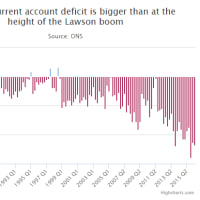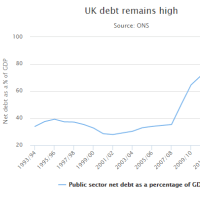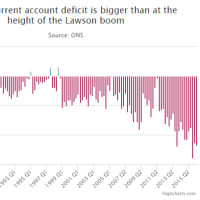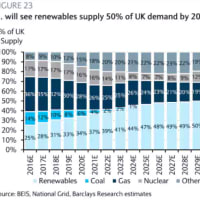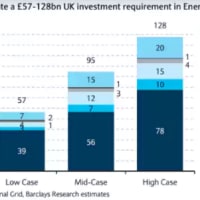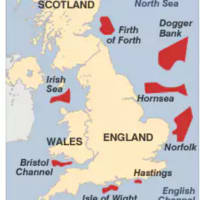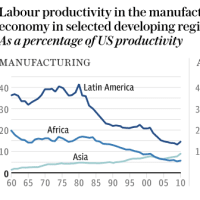Europe left behind as shale shock drives America’s industrial resurgence
(シェール・ショックで米国の工業界復活!取り残される欧州…)
By Ambrose Evans-Pritchard
Telegraph: 7:08PM GMT 28 Oct 2012
いいはなしだなー(涙
USA!! USA!! USA!!


(シェール・ショックで米国の工業界復活!取り残される欧州…)
By Ambrose Evans-Pritchard
Telegraph: 7:08PM GMT 28 Oct 2012
The wonders of US shale gas continue to amaze. We receive fresh evidence by the day that swathes of American industry have acquired a massive and lasting advantage in energy costs over global rivals, demolishing assumptions about US economic decline.
米国のシェール・ガスの驚異には驚かされっぱなしです。米国の実に様々な工業が世界的ライバルに対して、エネルギー費の面で巨大かつ持続的なアドバンテージを手に入れた、という新たな証拠が毎日のように出てきて、同国の経済的没落に関する憶測を打ち壊しています。
Royal Dutch Shell is planning an ethane plant in the once-decaying steel valley of Beaver County, near Pittsburg. Dow Chemical is shutting operations in Belgium, Holland, Spain, the UK, and Japan, but pouring money into a propylene venture in Texas where natural gas prices are a fraction of world levels and likely to remain so for the life-cycle of Dow's investments.
ロイヤル・ダッチ・シェルは、ピッツバーグに近いビーバー郡にある、かつては斜陽化する鉄鋼業峡谷に、エタン製造工場を建設する計画です。
ダウ・ケミカルはベルギー、オランダ、スペイン、英国、日本での事業を閉鎖しつつありますが、天然ガスの価格が世界的水準の数分の一であり、同社の投資サイクルが回り切るまでそれが続きそうな、テキサス州でのプロピレン事業に資金を注ぎ込んでいます。
Some fifty new projects have been unveiled in the US petrochemical industry. A $30bn investment blitz in underway in ethelyne and fetilizer plants alone.
米国の石油化学工業では、約50の新規プロジェクトが発表されました。
エチレンや肥料の製造工場だけでも、300億ドルもの大規模投資が進められています。
A study by the American Chemistry Council said the shale gas bonanza has reversed the fortunes of the chemical, plastics, aluminium, iron and steel, rubber, coated metals, and glass industries. "This was virtually unthinkable five years ago," said the body’s president, Cal Dooley.
米国化学工業協会の研究によれば、シェール・ガス祭で化学、プラスチック、アルミニウム、鉄鋼、ゴム、被覆金属、ガラス業界の運命は逆転したとのこと。
「こんなことは5年前には考えもつかなかった」とカル・ドゥーリー副会長は言いました。
This is happening just as other clusters of manufacturing - machinery, electrical products, transport equipment, furniture, etc - are "re-shoring" back from from China to the US. A 16pc annual rise in Chinese wages over the last decade has changed the game. PricewaterhouseCoopers calls it the "Homecoming".
これと並行して進行しているのは、機械、電気製品、輸送機器、家具といった他の業界の、中国から米国への「リショアリング」です。
過去十年間に亘って年率16%で上昇した中国の賃金がゲーム・チェンジャーでした。
プライスウォーターハウスクーパーズはこれを「ホームカミング」と呼んでいます。
The revival of the chemical industry is a spin-off from the greater drama of America’s energy rebound, though a very big one. As many readers will have seen, the US energy department said last week that the country will produce 11.4m barrels a day (b/d) of oil, biofuels, and liquid hydrocarbons next year, almost as much as Saudi Arabia.
化学工業の復活は非常に大きなドラマではありますが、米国のエネルギー復活というより大きなドラマの副産物です。
多くの読者が目にすることになると思いますが、米国エネルギー省は先週、米国の来年の石油、バイオ燃料、液化炭化水素日産量は1,140万バレルになる、つまりサウジアラビアと同じくらい生産すると発表しました。
America looks poised to become the world’s biggest producer in 2014. It will approach the Holy Grail of "energy independence" before the end of the decade.
米国は2014年には世界最大のエネルギー生産国になるようです。
2020年までに「エネルギー自立」という至高の目標達成に迫るでしょう。
This is largely due to hydraulic fracturing - blasting rock with water jets - to extract shale gas and oil, though solar power and onshore wind are playing their part.
太陽光発電と陸上風力発電も貢献してはいますが、これは主にシェール・ガスとシェール・オイルを採取する水圧砕破技術(ウォーター・ジェットで岩石を破壊する)のおかげです。
Europe is going in the opposite direction, drifting towards energy suicide. So is Japan as it shuts down its nuclear industry after the Fukushima disaster. China is more hard-headed, as it needs to be. The country is adding 20m cars a year. Chinese oil imports are rising by an extra 0.5m b/d annually.
ヨーロッパは逆方向に、エネルギー自殺へと向かいつつあります。
福島原発事故の後、原子力発電を閉鎖する日本も同様です。
中国はもっと冷徹ですが、そうでなければならないのです。
この国では毎年2,000万台も自動車が増えているのです。
中国の石油輸入は年間50万バレル/日ずつ増えています。
As of last week, US natural gas prices were roughly one third of European levels. The German chemicals group BASF said it had become impossible to match the US on production costs.
先週の時点で、米国の天然ガスの価格はヨーロッパのおよそ3分の1でした。
ドイツの化学工業グループ、BASFは、製造費で米国に対抗することはもう不可能だとしました。
Asia is facing an even greater handicap as Japan soaks up supply of liquefied natural gas (LNG) to offset the closure of its nuclear power stations. Prices on the Pacific rim are near $15 per million British thermal units (BTU), compared to $3 in the US.
日本が原発廃止を埋め合わせるべくLNGを大量購入しているため、アジアはより大きなハンデを負わされつつあります。
太平洋沿岸地域での価格はおよそ15ドル/Btuですが、米国では3ドルです。
The US cost of ethane - the raw material for polymers and much of what we use - has collapsed by 70pc since 2008. It is why Exxon and Westlake Chemical are building new ethane plants in America, while loss-making Mitsubishi is closing its unit in Japan, and Mitsui may follow soon. Credit Suisse said ethane production is barely viable in Japan, Korea or Taiwan.
米国のエタン(ポリマーの、そして僕らが使っているものの大半の原材料です)の価格は、2008年以降70%も大幅に下落しました。
赤字の三菱が日本のラインを閉鎖しつつあり、三井も間もなくこれに続きそうな一方、エクソンとウエストレイク・ケミカルが米国で新しいエタン工場を建設しているのはそのせいです。
クレディ・スイスによれば、日本、韓国、台湾でのエタン生産は殆ど採算に合わないとのこと。
The gas differential with Europe and Asia will narrow gradually over time but there is no genuine global market for gas. Prices are local, dictated by pipelines. In Europe’s case they are dictated by Vladimir Putin’s Gazprom. Germany imports 36pc of its gas from Russia. Dependency rises to 48pc for Poland, 60pc for Hungary, 98pc for Slovakia, and 100pc for the Baltics.
ヨーロッパとアジアのガスの差異は時間と共に狭まるでしょうが、ガスには本物のグローバル・マーケットというものがありません。
価格はローカルなものであり、パイプラインによって決定されます。
ヨーロッパの場合、ガス価格はウラジーミル・プーチン大統領のガスプロムによって決定されます。
ドイツはガスの36%をロシアから輸入しています。
依存率はポーランドが48%、ハンガリーが60%、スロバキアが98%、バルト諸国が100%です。
While LNG helps plug shortages, it requires shipping at minus 116 degrees and at great expense in molybdenum alloy hulls. It then needs an elaborate infrastructure at the docking port.
LNGは不足分の穴埋めに役立ちますが、-116度で輸送しなければならないことに加え、モリブデン合金船体を作るには大変な費用がかかります。
その上、港にも複雑なインフラが必要です。
Shale has made the US self-sufficient in gas almost overnight. The new twist of course is shale oil. Output has jumped to 2m b/d from almost nothing eight years ago. The Bakken field in North Dakota is twice as big as the conventional Prudhoe Bay field in Alaska.
シェール・ガスはほぼ一夜にして、米国をガス自立させました。
新たな展開はシェール・オイルです。
8年前はゼロに近かった生産量は、ほぼ200万バレル/日にまで急増しました。
ノースダコタ州にあるバッケン油田は、アラスカにある従来型のプルドーベイ油田の2倍近い規模があります。
America produced 81pc of its total energy needs in the first six months of this year, the highest since 1991. Citigroup thinks US ouput of crude and eqivalents will top 15.6m b/d by 2020, adding up to 3.6m jobs through multiplier effects. North America as a whole will reach 27m b/d - with Canada’s oil sands and Mexico’s deepwater fields - making the region a "new Middle East".
米国は今年1-6月期は必要なエネルギー量の81%を自給しましたが、これは1991年以来最高です。
米国の原油その他の生産量は2020年までに1,560万バレル/日を超え、乗数効果によって360万人分の雇用が創出されるだろう、とシティグループは考えています。
北米全体で2,700万バレル/日に達し、これにカナダのオイル・サンドとメキシコの深海油田が加わって、「新中東」地域が形成されるでしょう。
The implications are momentous. America will no longer need a single drop of oil from the Islamic world. The strategic burden will fall on Europe, which is meekly disarming itself to meet Wolfgang Schauble's austerity targets. Russia and China will be pleased to help.
その影響は極めて重大です。
米国はイスラム世界の石油を一滴たりとも必要としなくなるのです。
戦略的負担は、ヴォルフガング・ショイブレ独財務相の財政赤字削減目標を達成するために、意気地なく武装解除しつつあるヨーロッパの肩にかかってくるでしょう。
ロシアと中国は喜んで手伝ってくれることでしょうよ。
What is staggering is the near total failure of Europe’s leaders to face up to this new world order, or to prepare for their energy crunch ahead. They have spent the last decade wrangling over treaties that nobody wants, endlessly tinkering with institutional structures, and ultimately holding 22 summits to "save" EMU, largely oblivious to the bigger danger ahead.
驚愕すべきは、ヨーロッパの首脳陣がこの新しい世界秩序を直視すること、または、来るべきエネルギー不足に備えることに、ほぼ完璧に失敗していることです。
欧州首脳陣は過去十年間を、誰も望んでいない条約を巡る論争、絶えることなき制度構造弄り、そして挙句の果てに22回ものユーロ「救済」首脳会談開催をして、待ち構えるもっと大きな危険については殆ど気付かずに過ごしてきたのです。
Germany is to shut down its nuclear plants by 2022, reluctant to admit that this can be replaced only by coal - and even then with great difficulty. It is opting instead for the romantic quest of a politically-correct grid. The goal is to raise the share of renewables from 20pc to 35pc by 2020 at a cost of €200bn, and then to green supremacy by mid-decade for another €600bn.
ドイツは2022年までに原発廃止の予定で、これは石炭のみによって代替可能だと認めるのを躊躇しています…しかも、それでも、相当難しいのです。
その代わりに、政治的に正しい「グリッド」を求めるロマンチックな冒険を選択しつつあります。
目標は、2020年までに2,000億ユーロの費用で再生可能エネルギーの割合を20%から35%に引き上げてから、2050年までに更に6,000億ユーロを投じてエコ超大国になることです。
Germany seems to think it can power Europe’s foremost industrial machine from off-shore wind in the Baltic, without the high-voltage wires running from North to South yet built or on track to be built. "It is a religion, not a policy," said one German official privately, warning that his country is already "very near blackouts". He fears an almighty national disaster.
ドイツはバルト地域の沖合風力発電で欧州最高の産業機械を動かせると考えているようですが、南北に走る高圧線もなく、またはこれから走らせる予定もありません。
「これは宗教であって政治じゃないんだよ」と独政府の中の人が密かに教えてくれました。
そして、自分の国は既に「停電直前」だから、と警告しました。
この中の人は国家的大惨事を危惧しています。
"There is huge fear about the energy switch," said Volker Treier from the German Chambers of Industry. "We have no realistic plan to replace nuclear power. Electricity costs are already very high. Everybody is complaining about this."
「エネルギーの切り替えには大変な懸念が伴う」とドイツ商工会議所のVoker Treier氏は言いました。
「我々には現実的な原子力交換プランはない。電気量は既に非常に高額だ。皆これには文句を言っている」
The risk is that Germany will hit its aging crunch later this decade with no viable power system in place, having discovered that the contingent liabilities of EMU rescues are real liabilities - and bigger than German citizens were led to believe. You could scarcely devise a more certain way to ruin a nation. My sympathies to German friends watching this unfold with horror.
危険なのは、ユーロ支援の偶発負債は本当の負債であり、しかもドイツ市民が思い込まされているよりも大きいことを発見した後で、ドイツで2010年代終盤に、実効性のある発電システムもない中で、老朽化問題が本格化することです。
国を滅亡させるにこれ以上確実な方法はないでしょう。
慄然としながらこの様子を観察するドイツの友人達に同情します。
France has shale but has imposed a drilling moratorium It will shut down a nuclear plant for good measure to appease the Greens. Italy has banned nuclear power, yet has little else.
フランスにはシェールがありますが、掘削モラトリアムを布いています。
緑の党を宥めるために、原発も相当閉鎖するでしょう。
イタリアは原発を禁止していますが、他には殆ど何もありません。
Britain has been sauntering slowly towards a debacle for nearly fifteen years. Eight coal plants are to close by 2015 as they burn up their EU carbon allowances. Much of the UK’s nuclear industry is on its last legs. No new plant has yet been commissioned.
英国は15年近くかけて、大惨事に向かってゆっくりぶらぶら近付きつつあります。
2015年までに、欧州連合排出枠を使い切ってしまう石炭火力発電所8つを閉鎖する予定です。
英国の原発の大半は廃炉寸前です。
新しい原発の建設は発注されていません。
What we have is a very big gamble on off-shore wind, a very long way from where most people live. It will supposedly supply 17pc of UK electricity by 2020, equal to all other off-shore wind projects in the world combined. Let us pray that it works.
僕らに残されているのは、大半の人の居住地から非常に遠く離れたところにある、沖合風力発電という非常に大きなギャンブルです。
2020年までに英国の電力需要の17%を供給するとされていますが、これは英国以外の世界中の沖合発電を全て足した量に相当します。
上手く行くことを祈りましょう。
As the years recede from the credit crash of 2008, it is becoming clearer that America suffered less damage than supposed. The Great Recession was certainly a shock. The debt-load is frightening, but the US can at least hope to outgrow that debt.
2008年の信用バブル崩壊から時が経つにつれて、米国のダメージは思ったよりも軽かった、ということが明らかになりつつあります。
大不況は確かにショックでした。
債務の量は恐ろしいほどでしたが、米国は、少なくとも、成長によって債務を脱出する希望を持てるのです。
What is remarkable is that Euroland is not cutting its combined public and private sector debt any faster than the US - as a share of GDP - by asphyxiating its economy. It is doing so more slowly. That is the difference between growth and recession.
驚くべきは、ユーロ圏の経済絞殺による官民部門の債務削減スピードが米国と変わらないことです(GDP比率で見た場合)。
米国よりもゆっくりと減らしているのです。
それが成長と不況の違いです。
They look only at public debt in Euroland, fixated myopically on one variable, ignoring the lessons of balance sheet recessions. Such is policy architecture of Europe.
彼らは一つの変数に近視眼的に固執して、バランスシート不況の教訓をあーあーきこえないして、ユーロ圏の公的債務しか見ていないのです。
それがヨーロッパの政策構造なのです。
Four years on we can seen that the epicentre of destruction has in reality been right here in the Old World. We may look back and realize that the last decade - the Merkel decade, the EMU distraction decade, and in its way the Brown decade - was the turning point when Europe finally lost its global footing.
あれから4年…破壊の中心点は現実には、ここ旧世界であったということがわかります。
僕らは振り返って、こう気付くかもしれません…過去十年間は、メルケルの十年、ユーロ崩壊の十年、そして或る意味、ブラウンの十年は、ヨーロッパが世界的な基盤を遂に喪失した転換点であったと。
いいはなしだなー(涙
USA!! USA!! USA!!











